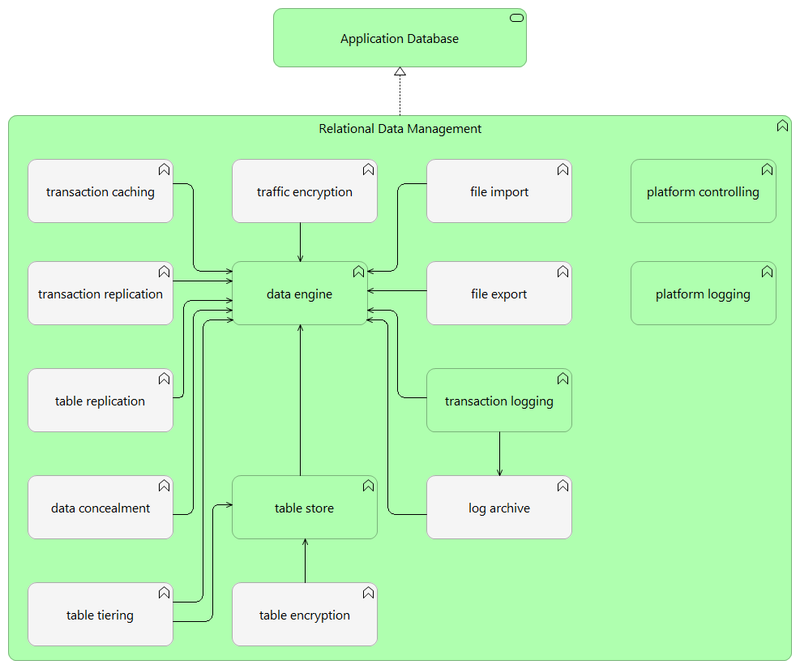PD.Relational Data Management: Difference between revisions
No edit summary |
No edit summary |
||
| Line 40: | Line 40: | ||
|choice=May | |choice=May | ||
|reason=When data is exchanged over unsecured data transport facilities, it might be a good measure to encrypt the data at engine level. | |reason=When data is exchanged over unsecured data transport facilities, it might be a good measure to encrypt the data at engine level. | ||
}} | }} | ||
{{Table Ending}} | {{Table Ending}} | ||
Revision as of 09:49, 27 November 2019
| Page maturity This page has maturity level 0 (proposal) |
| PD | Relational Data Management | Version: | 0.3 | 
| |
|---|---|---|---|---|---|
| Document type: | Pattern Definition | Owner: |
| This Pattern provides the function layout to model "strictly structured data" handling, in a relational fashion. |
Description
This Pattern Definition serves the creation of models in the Service Category "Data Management". This Pattern provides the function layout to model "strictly structured data" handling, i.e. it controls the creation, updating and querying of sets of organized data. It is called 'relational data management', because a schema is used to store data in a predefined way, with predefined relations between data objects. The provisioning of the following elements is important with this kind of data handling:
- a "modeling language", to define schemas;
- a "query language", to enable data object reading, creating, updating, and deleting;
- a "transaction mechanism", to enable interaction with other (instances of) data management facilities and applications.
These elements are provided by the Data Engine. Data objects are stored using a predefined (structured) Data Store. Both functions form the core of this Pattern.
Services realized
This Pattern realizes the following service(s):
- Application Database (This service provides a data store for applications with a predefined structure)
Functional and Integration view
This is the graphic representation of the functional model of this Generic Pattern:


Pattern Definition Composition
This pattern is an aggregation of the following (mandatory and optional) functions, expressed in Data/Object Types and Fundtion Definitions:
| Function | Inclusion | Description/Rationale |
| no link Engine | recommended | The Data Engine is the heart of the pattern, as it offers the intelligence to control strictly structured data handling. |
| no link Store | recommended | The Table Store offers the predefined storage structure that is one of the key characteristics of relational data management. |
| no link Encryption | optional | When data is exchanged over unsecured data transport facilities, it might be a good measure to encrypt the data at engine level. |